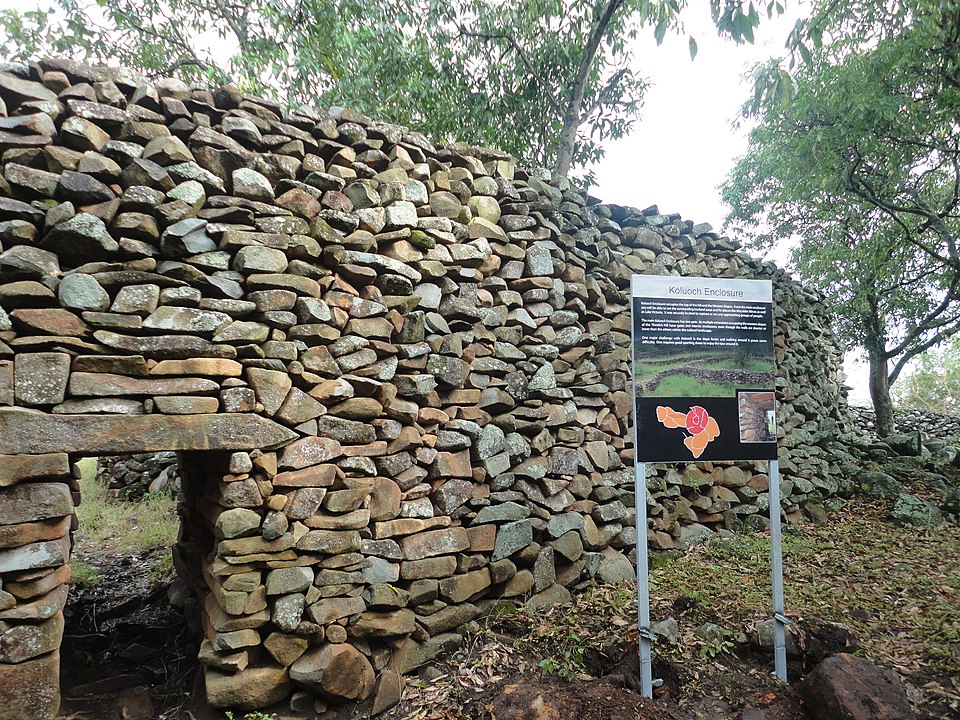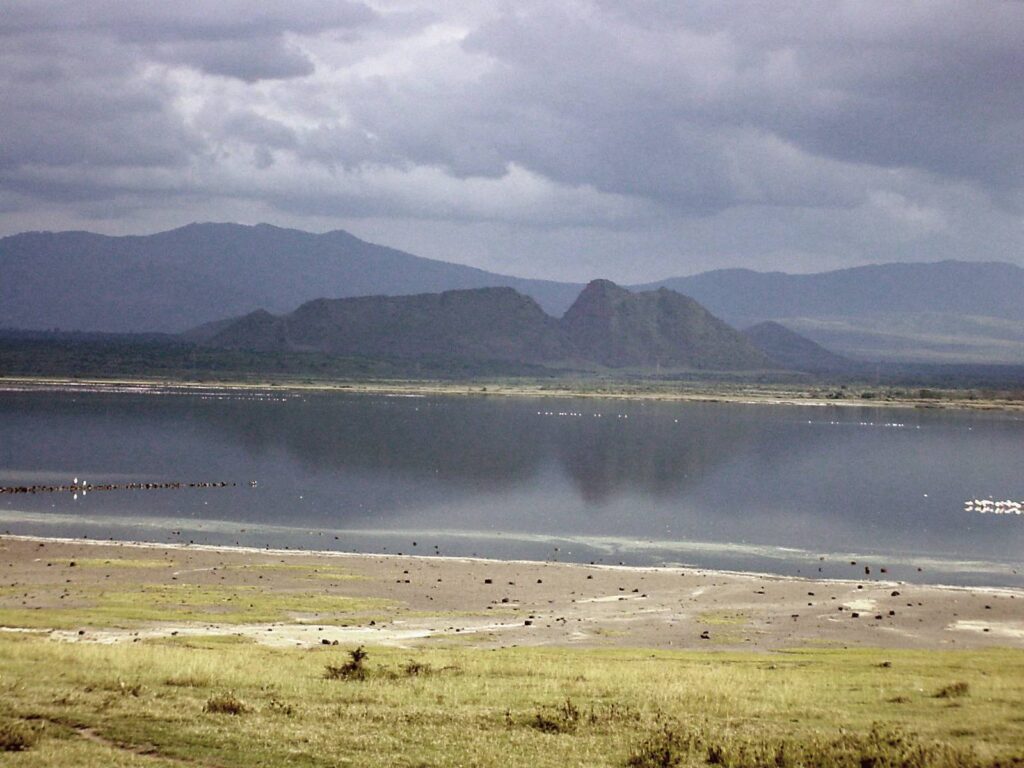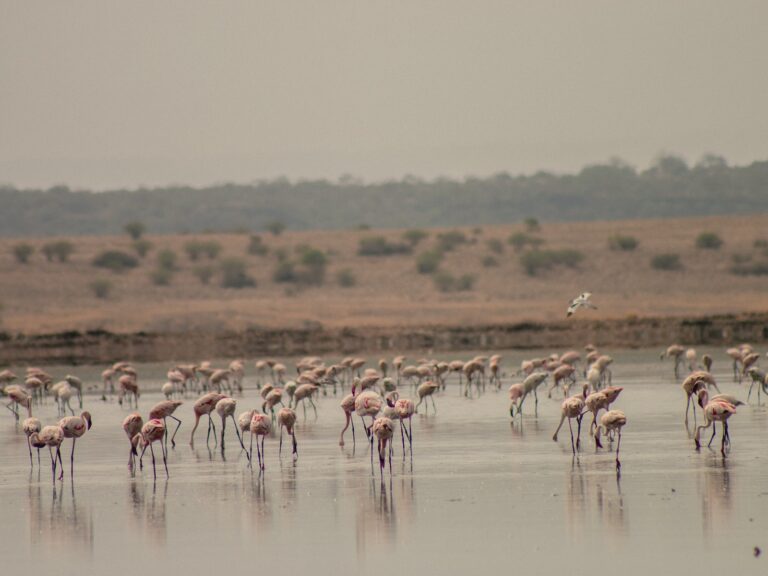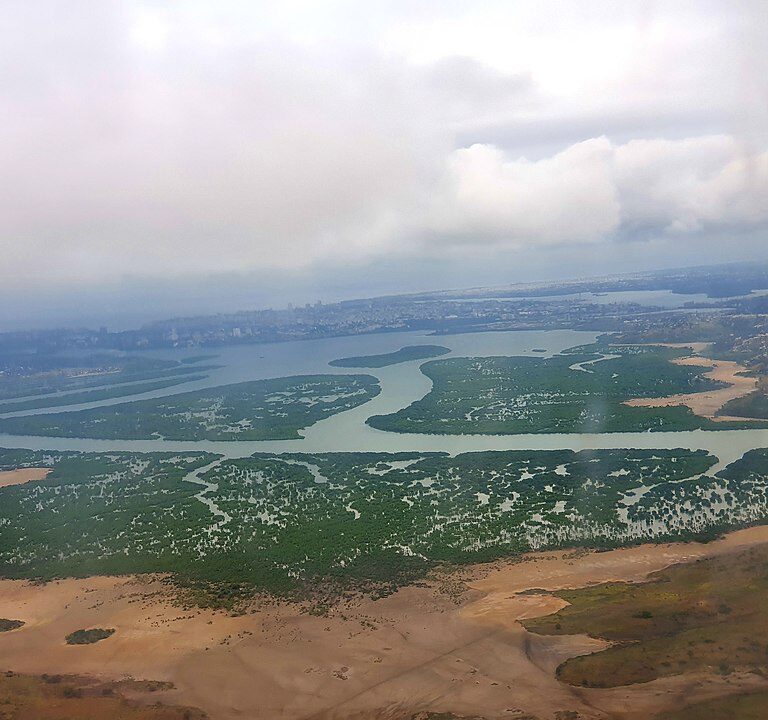Kenya is a land of incredible beauty and diversity, boasting many cultural and natural treasures. Kenya offers something for every traveler, from its majestic mountain ranges and vast savannahs to its ancient towns and traditional communities. One of the best ways to experience the country’s rich heritage is through its UNESCO World Heritage Sites. This article will explore Kenya’s top 7 UNESCO World Heritage Sites that showcase the country’s natural and cultural treasures.
Lake Turkana National Parks

Lake Turkana National Parks is a UNESCO World Heritage Site located in the northern region of Kenya. It comprises three national parks: Sibiloi National Park, Central Island National Park, and South Island National Park. The parks are known for their unique ecosystem shaped by the region’s vast, desert-like conditions. The area is also home to a wide range of wildlife, including Nile crocodiles, hippos, and various bird species.
Sibiloi National Park
Sibiloi National Park is a part of Lake Turkana National Parks, a UNESCO World Heritage Site located in the northern region of Kenya. The park is known for its rich fossil beds containing evidence of human and animal life dating back over 4 million years. The park covers an area of 1,325 square kilometers and is situated on the eastern shore of Lake Turkana.
The park’s unique landscapes include volcanic ash deserts, savannah grasslands, and wetlands. The park is home to many wildlife, including elephants, lions, and antelope species. It is also an important birdwatching destination, with over 400 bird species recorded in the park, including the lesser flamingo, which is the world’s largest breeding colony of this species.
Sibiloi National Park is also an important cultural site, as it is home to traditional communities who have lived in the area for centuries. Visitors to the park can take part in guided tours and learn about the history and culture of the communities that live in the area.
The park offers a variety of activities for visitors, including hiking, camping, and boat tours. Hiking in the park allows one to explore unique landscapes and spot wildlife. Camping offers an opportunity to experience the park’s wilderness and wildlife at night. Boat tours provide a great chance to spot crocodiles and hippos in the lake and bird watch.
Sibiloi National Park is a unique and diverse destination that offers visitors a wide range of experiences. It is an important paleontological site and a great destination for history and nature lovers. The park is home to a wide range of wildlife, including elephants, lions, and various antelope species, and is an important birdwatching destination. It is also an important cultural site, as it is home to traditional communities who have lived in the area for centuries.
Central Island National Park
Central Island National Park is a part of Lake Turkana National Parks, a UNESCO World Heritage Site located in the northern region of Kenya. The park is in the middle of Lake Turkana, also known as the Jade Sea. The park covers an area of 23 square kilometers and is known for its rich birdlife and the large population of Nile crocodiles.
The island is known for its large population of Nile crocodiles, which can be seen basking on the shores. Visitors can take boat trips to the island, camp overnight, and explore the island’s unique ecosystem. The island is also home to a variety of birdlife, including the lesser flamingo, which is the world’s largest breeding colony of this species.
Central Island National Park is also an important cultural site, as it is home to traditional communities who have lived in the area for centuries. Visitors to the park can take part in guided tours and learn about the history and culture of the communities that live in the area.
The park offers a variety of activities for visitors, including boat tours, camping, and bird watching. Boat tours provide a great chance to spot crocodiles and hippos in the lake, and bird watching is an excellent activity on the island. The island is also a great destination for camping, which offers an opportunity to experience the park’s wilderness and wildlife at night.
Central Island National Park is a unique and diverse destination that offers visitors a wide range of experiences. It is an important birdwatching destination, with over 400 bird species recorded in the park, including the lesser flamingo, which is the world’s largest breeding colony of this species. The park is also home to a large population of Nile crocodiles, which can be seen basking on the shores. It is also an important cultural site, as it is home to traditional communities who have lived in the area for centuries.
South Island National Park
South Island National Park is a part of Lake Turkana National Parks, a UNESCO World Heritage Site located in the northern region of Kenya. The park is on Lake Turkana’s southern shore, the Jade Sea. The park covers an area of 15 square kilometers and is known for its wide range of wildlife, including elephants, lions, and various antelope species.
The park offers a variety of activities for visitors, including hiking, camping, and boat tours. Hiking in the park allows one to explore unique landscapes and spot wildlife. Camping offers an opportunity to experience the park’s wilderness and wildlife at night. Boat tours provide a great chance to spot crocodiles and hippos in the lake and bird watch.
South Island National Park is also an important cultural site, as it is home to traditional communities who have lived in the area for centuries. Visitors to the park can take part in guided tours and learn about the history and culture of the communities that live in the area.
The park is known for its wide range of wildlife, including elephants, lions, and various antelope species, which can be seen on a wildlife safari. The park is also an important birdwatching destination, with over 400 bird species recorded in the park, including the lesser flamingo, which is the world’s largest breeding colony of this species.
South Island National Park is a unique and diverse destination that offers visitors a wide range of experiences. It is an important wildlife destination and a great destination for nature lovers. The park is also an important cultural site, as it is home to traditional communities who have lived in the area for centuries. It is also an important birdwatching destination, with over 400 bird species recorded in the park, including the lesser flamingo, which is the world’s largest breeding colony of this species.
Mount Kenya National Park/Natural Forest

Mount Kenya National Park and Natural Forest is a UNESCO World Heritage Site in central Kenya. The park is home to Mount Kenya, the second-highest mountain in Africa, and it covers an area of 715 square kilometers. The park is known for its incredible natural beauty, including its forests, glaciers, and alpine meadows. The park is also home to many wildlife, including elephants, buffalo, and bird species.
The park offers a variety of activities for visitors, including hiking, camping, and wildlife safaris. Hiking in the park allows one to explore unique landscapes and spot wildlife. Camping offers an opportunity to experience the park’s wilderness and wildlife at night. Wildlife safaris provide a chance to spot elephants, buffalo, and other big game in their natural habitat.
Mount Kenya National Park is also a cultural site, as the mountain is considered sacred by the Kikuyu people, who have lived there for centuries. Visitors can also explore the traditional communities in the park and learn about their culture and way of life. This allows visitors to understand the importance of the mountain to the local people and their beliefs.
The park is also an important ecological site, as it is home to various plant and animal species unique to the region. It is home to several endangered species, including the mountain bongo, a large forest antelope considered critically endangered.
Mount Kenya National Park and Natural Forest is a unique and diverse destination that offers visitors a wide range of experiences. It is an ideal destination for nature and culture enthusiasts, offering opportunities to explore unique landscapes, spot wildlife, and learn about local communities’ traditional cultures. The park is also an important ecological site, as it is home to various plant and animal species unique to the region.
Lamu Old Town
Lamu Old Town is a UNESCO World Heritage Site located on the island of Lamu, off the coast of Kenya. The town is a well-preserved example of a traditional Swahili settlement. It is known for its unique architecture, characterized by narrow streets, coral stone houses, and intricately carved wooden doors.
The town has a rich history and culture and has been an important center of trade and commerce for centuries. Visitors can explore the town and see the many historical buildings and monuments, including the Lamu Fort, which dates back to the 14th century, and the Lamu Museum, which offers a glimpse into the history and culture of the town.
Visitors can also explore the local markets and shops, where they can find traditional crafts and souvenirs. The town is also home to several traditional Swahili houses, which have been converted into hotels and guesthouses, offering visitors an opportunity to experience the traditional way of life.
Lamu Old Town is also known for its unique Swahili culture and way of life, which is still very much alive today. Visitors can participate in traditional activities such as dhow sailing and visit local schools and mosques to learn more about the culture. The town also offers a variety of outdoor activities, such as snorkeling and diving in the nearby coral reefs, swimming, and sunbathing on the beautiful beaches.
Lamu Old Town is a unique and diverse destination that offers visitors a wide range of experiences. It is an important cultural and historic site and offers an opportunity to learn about the traditional Swahili culture and way of life. The town also offers a variety of outdoor activities and beautiful beaches.
Fort Jesus

Fort Jesus is a UNESCO World Heritage Site located in Mombasa, Kenya. The Portuguese built the fort in the late 16th century to protect their regional interests and control the trade routes. The fort is an outstanding example of the military architecture of the 16th century, and it is considered one of the most important monuments of the Swahili Coast.
The fort is a massive structure with walls up to 5 meters thick in some places. It features a complex system of bastions, towers, corridors, underground tunnels, and cisterns. Visitors can explore the fort and see the various structures, including the main gate, the chapel, the governor’s residence, and the prison.
Fort Jesus also played an important role in the region’s history, as it was a major center of trade and commerce. It was also a site of many battles and changed hands several times between the Portuguese and the Omani Arabs. Today, the fort is a popular tourist attraction, and visitors can learn about the region’s history and the fort through guided tours and exhibitions.
Fort Jesus also offers a great view of the Old Town of Mombasa and the Indian Ocean. Visitors can walk around the old town and see the many historical buildings and monuments and explore the local markets and shops.
Fort Jesus is a unique and diverse destination that offers visitors a wide range of experiences. It is an important historical and cultural site, and it is an outstanding example of the military architecture of the 16th century. The fort also offers an opportunity to learn about the region’s history.
Sacred Mijikenda Kaya Forests

The Sacred Mijikenda Kaya Forests is a UNESCO World Heritage Site located in Kenya’s coastal region. The site comprises 11 forested hills called “kayas” that are sacred to the Mijikenda people. The kayas have been used as a place of worship and cultural practices for centuries. They are also home to traditional communities that continue to reside in the area and practice their traditional way of life.
The kayas are also an important ecosystem, providing habitat for various wildlife, including primates and birds. Visitors to the kayas can take part in guided tours and learn about the cultural and ecological significance of the site. They can also explore the traditional villages and learn about the daily life and customs of the Mijikenda people.
Thimlich Ohinga

Thimlich Ohinga is a UNESCO World Heritage Site located in the western region of Kenya, near the border with Tanzania. The site is a well-preserved traditional settlement that dates back to the 16th century. It is an important cultural site, as it reflects the traditional way of life of the Luo people who lived there.
Thimlich Ohinga is a unique site in that it is a dry-stone walled settlement and is considered one of the most outstanding examples of dry-stone architecture. The site comprises a central courtyard, living quarters, and granaries. It is surrounded by a massive stone enclosure wall that protects the inhabitants from wild animals and raiders.
Visitors can explore the settlement, including a central courtyard, living quarters, and granaries. They can also take guided tours and learn about the history and culture of the Luo people who lived there. The guided tours provide an opportunity to learn about the traditional way of life, customs, and beliefs of the Luo people, who are known for their rich oral traditions.
Thimlich Ohinga is a unique and diverse destination that offers visitors a wide range of experiences. The site is an important cultural site, as it reflects the traditional way of life of the Luo people there. It is also
a unique architectural site, as it is one of the best-preserved examples of dry-stone architecture. The site’s massive stone enclosure wall and various structures offer a glimpse into the past and how people lived in this area centuries ago.
The site is also an important ecological site as it is located within a forest that provides a habitat for various wildlife and plants. Visitors can also explore the surrounding area and see the beautiful landscapes, which include wetlands, forests, and savannah grasslands.
Thimlich Ohinga is a great destination for history and culture enthusiasts and those interested in traditional architecture and ecological tourism. The site provides an opportunity to learn about the traditional way of life, customs, and beliefs of the Luo people and to explore the unique architectural features of the site.
Kenya Lake System in the Great Rift Valley
Kenya Lake System in the Great Rift Valley is a UNESCO World Heritage Site located in the western region of Kenya. The site comprises three interlinked lakes: Lake Bogoria, Lake Nakuru, and Lake Elementaita. The lake system is an important ecological site, supporting much wildlife, including flamingos, pelicans, and bird species. The lake system is also an important cultural site, as it is home to traditional communities who have lived in the area for centuries.
Lake Bogoria
Lake Bogoria is one of the three interlinked lakes forming the Kenya Lake System in the Great Rift Valley, a UNESCO World Heritage Site located in the western region of Kenya. The lake is known for its hot springs and geysers resulting from the area’s geothermal activity. The lake also supports a large population of flamingos, which can be seen in large numbers along the shoreline. The lake is also home to wildlife, including zebras, warthogs, and waterbuck.
Lake Bogoria is a shallow, saline lake with a surface area of around 32 square kilometers and is fed by hot springs and geysers. The lake is known for its high concentration of sodium bicarbonate and other minerals, which attract large flocks of flamingos. The lake is also home to various other bird species, including pelicans, cormorants, and storks.
The lake is also important for the local communities, traditionally used the hot springs and geysers for healing and cleansing rituals. Visitors can take guided tours of the lake and learn about the geothermal activity, the wildlife that calls the lake home, and the cultural significance of the lake to the local people.
Lake Nakuru

Lake Nakuru is one of the three interlinked lakes forming the Kenya Lake System in the Great Rift Valley, a UNESCO World Heritage Site located in the western region of Kenya. The lake is known for its large population of pink flamingos, which can be seen in large numbers along the shoreline. The lake is also home to various other bird species, including pelicans, cormorants, and storks. In addition to the birdlife, the lake is also home to various other wildlife, including zebras, warthogs, and waterbuck.
The lake is situated in the Great Rift Valley, and it covers an area of around 68 square kilometers. The lake’s alkaline waters are rich in minerals and provide the perfect habitat for the flamingos. The lake is also home to several mammal species, including the endangered Rothschild’s giraffe, black and white rhinoceros, and the lion.
Lake Nakuru National Park, which surrounds the lake, offers visitors an opportunity to explore the diverse ecosystem and see a wide variety of wildlife. Visitors can take guided tours of the lake and learn about the bird species that call the lake home. They can also participate in wildlife safaris, bird watching, and exploring the traditional villages.
Lake Nakuru is a popular destination for tourists and nature enthusiasts. The lake’s high population of flamingos and the variety of other wildlife species make it a great destination for wildlife viewing. The lake’s surroundings also allow visitors to explore the diverse ecosystem and see a wide variety of wildlife.
Lake Elementaita

Lake Elementaita is one of the three interlinked lakes forming the Kenya Lake System in the Great Rift Valley, a UNESCO World Heritage Site located in the western region of Kenya. The lake is a shallow, soda lake that supports a variety of bird species, including flamingos, pelicans, and storks. The lake is also home to wildlife, including zebras, warthogs, and waterbuck.
Lake Elementaita is a shallow lake that covers an area of around 90 square kilometers. The lake is fed by several small streams known for their high sodium concentration and other minerals. The lake’s waters are alkaline, creating a perfect habitat for the birdlife that calls the lake home. The lake is also home to several mammal species, including the impala, warthog, and buffalo.
The lake is also an important place for the local communities, who have traditionally used the lake’s resources for fishing and irrigation. Visitors can take guided tours of the lake and learn about the different species that call the lake home and the cultural significance of the lake to the locals.
Visitors to Lake Elementaita can also engage in hiking, bird watching, and wildlife safaris. The lake’s surroundings also allow visitors to explore the diverse ecosystem and see a wide variety of wildlife. The lake is a perfect destination for nature and bird enthusiasts, with various bird species that call the lake home and the opportunity to see other wildlife species such as zebras, warthogs, and waterbuck.
The Kenya Lake System in the Great Rift Valley is a unique and diverse destination that offers visitors a wide range of experiences. The lake system is an important ecological site, supporting much wildlife, including flamingos, pelicans, and various bird species. It is also an important cultural site, as it is home to traditional communities who have lived in the area for centuries. Visitors can participate in wildlife safaris, bird watching, and exploring the traditional villages. They can also learn about the history and culture of the communities that live in the area.
Conclusion
Kenya is a land of incredible beauty and diversity, and its UNESCO World Heritage Sites offer a glimpse into the country’s rich cultural and natural heritage. From the unique ecosystems of Lake Turkana National Parks to the ancient architecture of Lamu Old Town, these sites offer visitors a wide range of experiences. Whether you’re a nature lover, culture enthusiast, or history buff, Kenya’s UNESCO World Heritage Sites have something to offer. We hope this article has inspired you to add these sites to your bucket list and explore Kenya’s cultural and natural treasures.







